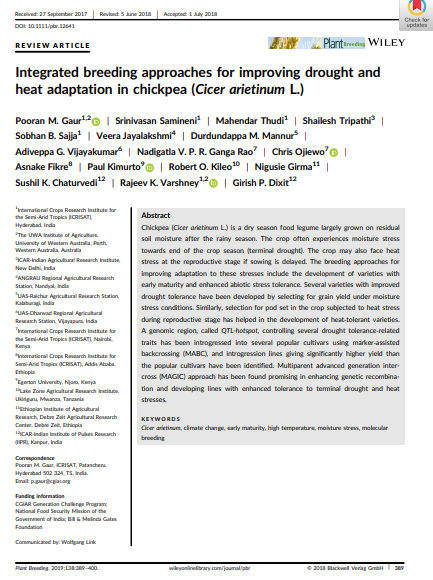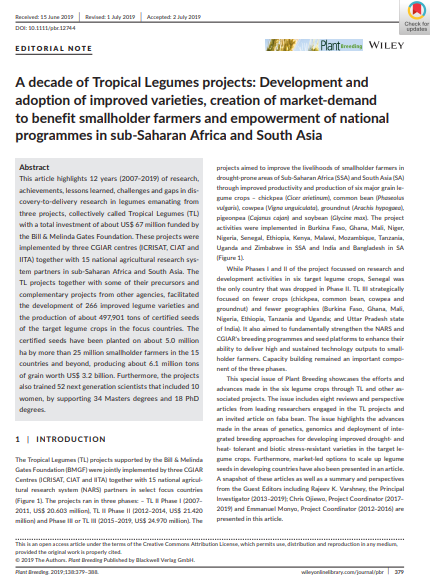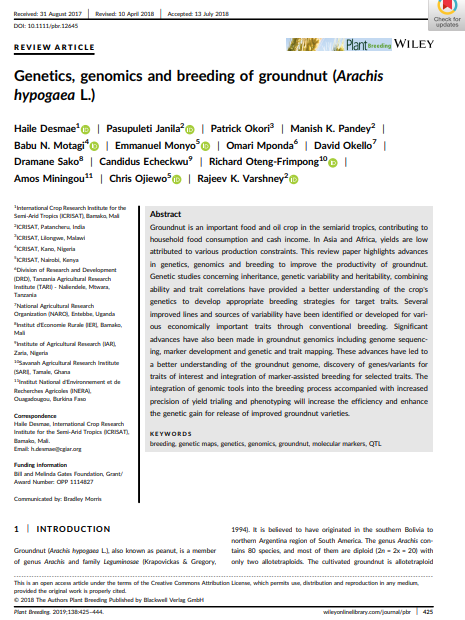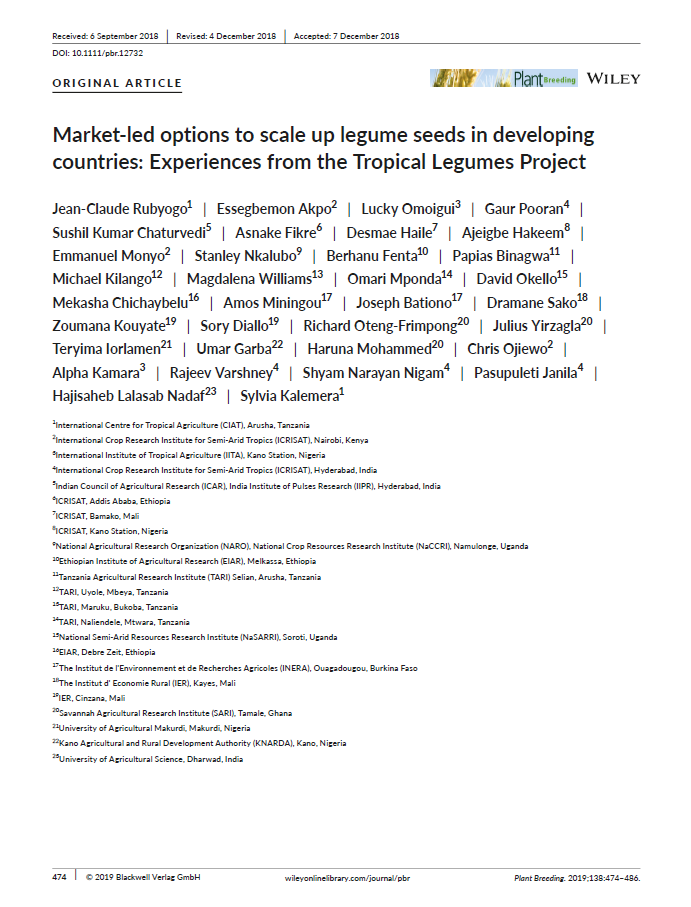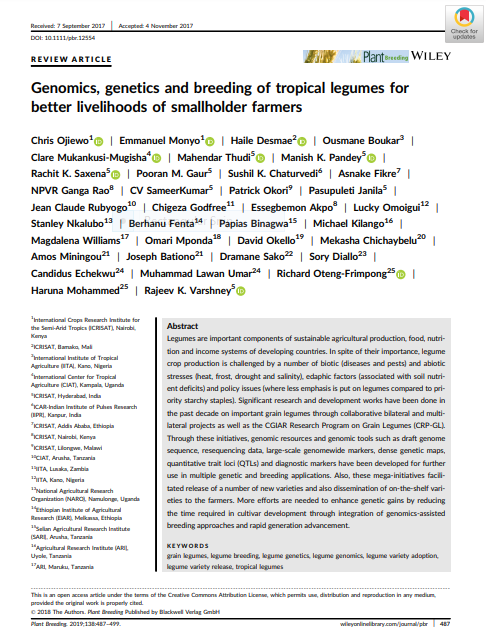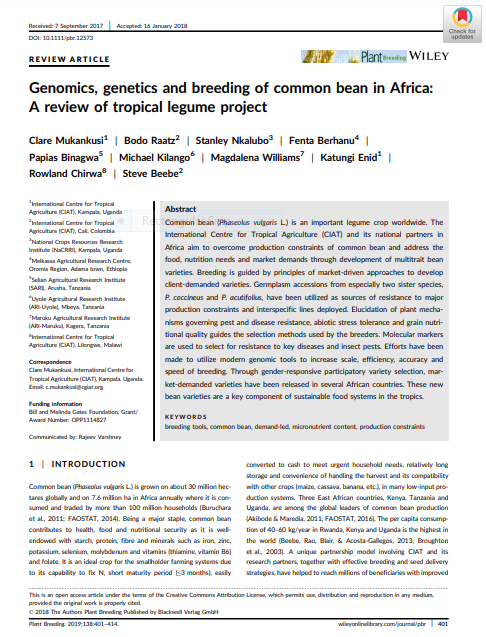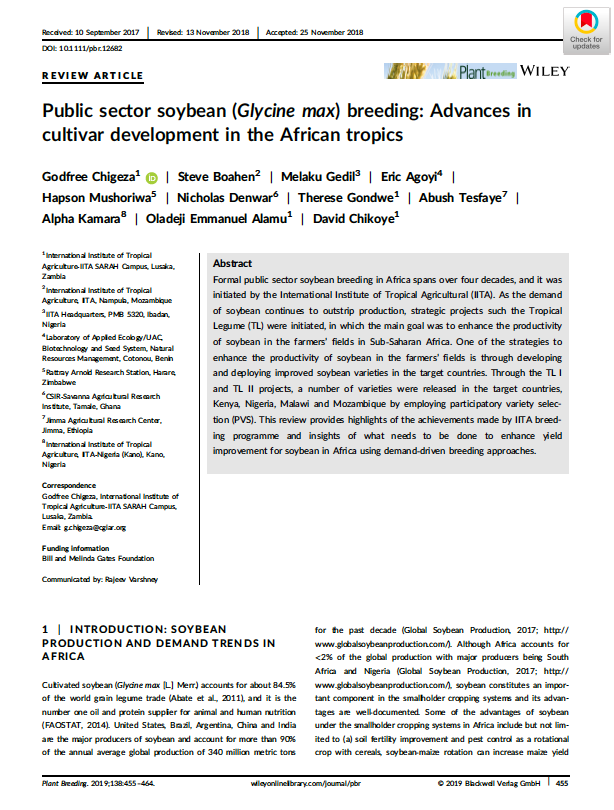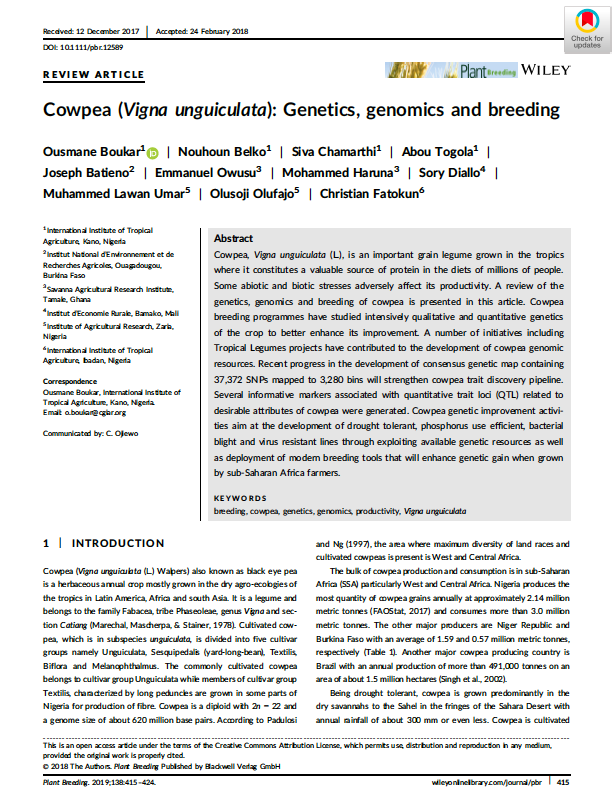Integrated breeding approaches for improving drought and heat adaptation in chickpea (Cicer arietinum L.)
Summary
Chickpea (Cicer arietinum L.) is a dry season food legume largely grown on residual soil moisture after the rainy season. The crop often experiences moisture stress towards the end of the crop season (terminal drought). The crop may also face heat stress at the reproductive stage if sowing is delayed. The breeding approaches for improving adaptation to these stresses include the development of varieties with early maturity and enhanced abiotic stress tolerance. Several varieties with improved drought tolerance have been developed by selecting for grain yield under moisture stress conditions. Similarly, selection for pod set in the crop subjected to heat stress during the reproductive stage has helped in the development of heat-tolerant varieties. A genomic region called QTL hotspot, controlling several drought tolerance-related traits, has been introgressed into several popular cultivars using marker-assisted backcrossing (MABC), and introgression lines giving significantly higher yield than the popular cultivars have been identified. The multiparent advanced generation intercross (MAGIC) approach is also a promising way of enhancing genetic recombination and developing lines with enhanced tolerance to terminal drought and heat stresses.
Open resource Download resource Access resource on external site